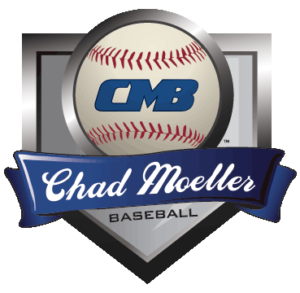What is the Best Position on the Field?
 What are the best baseball positions on the field? I will give you a hint. He is the only player that sees the entire field. Some say he has the best seat in the stadium. He has his back to no one, and is involved in every pitch. That’s right the catcher.
What are the best baseball positions on the field? I will give you a hint. He is the only player that sees the entire field. Some say he has the best seat in the stadium. He has his back to no one, and is involved in every pitch. That’s right the catcher.
Sure I’m biased having had this “best seat” for 25 years. I started catching at age 11 when my cousin, also a former professional baseball player and now coach, told me the best and fastest way to be a major league baseball player was to be a catcher or left handed pitcher. Becoming left-handed was out of the question so catching it was. My name is Chad Moeller, and for the last 16 years I played professional baseball. The last 11 of those years I played in the Major leagues.
And yes, my cousin was right when he suggested catcher as the best path to achieve my boyhood dream. I now teach catching and hitting to young players, and try and pass on my knowledge and passion of the game.
What does it take to Become a Baseball Catcher?
So what does it take to become a catcher? Willingness. Catcher is a very demanding position on the body and continually tests the mind. Catchers must be tough and not be afraid. They will get hit by foul balls, and must block pitches in the dirt. A normal game displays bruises and moments of pain and I would be lying if I said the baseball doesn’t hurt. Yet, the pain does go away. Yes, there must be a willingness to be a catcher.
The baseball catcher should be the thinker on the field. Like a chess game, the catcher must be thinking many pitches ahead. They must then call the pitches after determining the strengths and weaknesses of the current pitcher. The catcher must also be thinking for the other players, and continue reminding them of their duties such as outs, bases to cover, and who covers them, where to go on a bunt, etc. The coaching staff can’t be on the field, so their thinking is put upon the catcher’s shoulders. This position requires leadership qualities. This is not a choice for a catcher; it’s a requirement. With experience the leadership qualities will grow.
Baseball Catcher Evolution over the Years
The catchers’ position has changed over the years. At one time catchers were normally heavier and slower. That has changed. Today Major league catchers are anywhere between 5’9” and 6’6”. At 6’4”, I was a tall catcher, but not the tallest. There is not just one body style for a catcher.
Catching skills and technique will improve with time and practice. Technique is very important, not only to play the position, but to play it safely as well. We will talk more about skills and technique in future blogs.
Sure, nearly anyone can catch balls from a pitcher, but to do it well is what real catching is all about. The catcher must always put the pitcher and the team ahead of himself. Catchers seldom get the recognition that goes with other positions. Catchers are more like an offensive lineman in football. They are only noticed when they screw up. I was told at a young age that if no one noticed you behind the plate it meant you probably had a good game. If the fans knew your face too well, you were probably at the backstop too much, picking up balls that got passed you.
So, you want to be a catcher? Do you have the willingness? Are you willing to be thinking all the time? Are you willing to improve your skills and techniques? If you answered “yes” to these questions, then you have a great start towards having the best seat in the house. That seat right behind home plate.
Until next time let me know your comments, thoughts, and questions.
From behind the dish,
Chad
